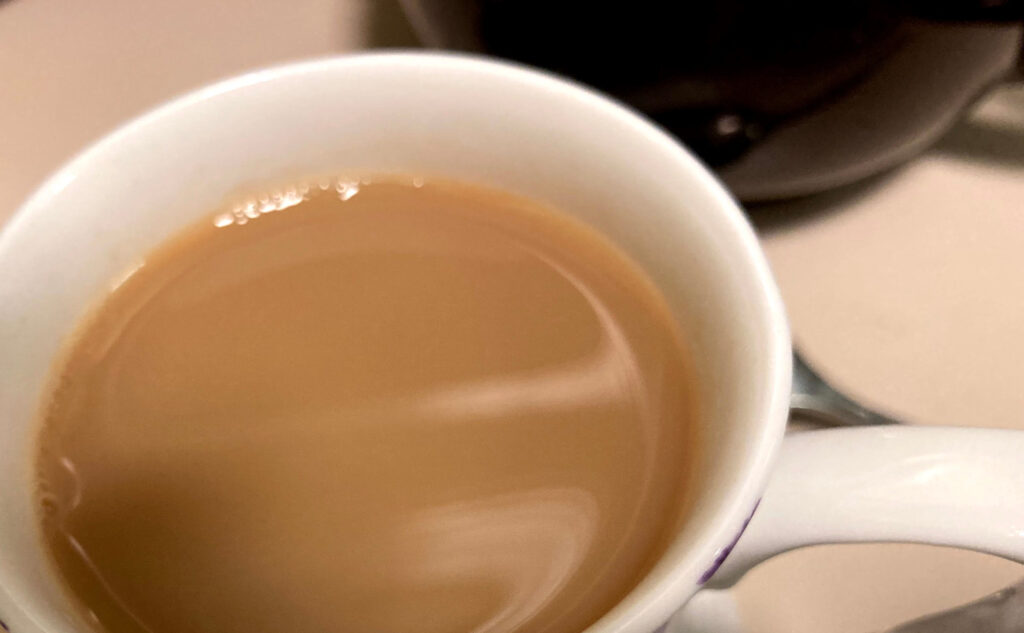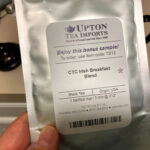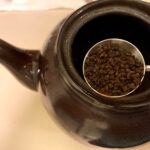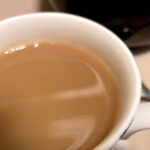
The last time I ordered from Upton Tea Imports, they slipped in a bonus sample of CTC Irish Breakfast Blend. I love a good Irish breakfast tea as much as I love a good English breakfast tea, but what exactly is the difference between the two?
The answer, my friends, comes with a brief but digestable history lesson. And if we are to do this properly, we can’t ignore the Scottish contribution to the genre.
A Very Brief History of Breakfast Tea
Why is it called breakfast tea? According to one explanation, the tea needed to be robust enough to pair with a full English breakfast of eggs, sausage, bacon, beans, grilled tomatoes, and toast. In other words, the tea needs to be effective enough to quell any tummy upset caused by such a rich meal.
Could there be an underlying biological explanation as well? Kind of like how Jewish people avoided eating pork (in accordance with religious dietary law) long before science came along to validate the practice, perhaps the tea’s antioxidants help combat the negative arterial effects of eating such a fatty, cholesterol-laden meal. One can have her or his greasy breakfast and live to eat many more.
English Breakfast Tea
The original English breakfast tea, dating back to the 17th century, was black tea from China. But trade with China soured, and as the tea supply dwindled, it was replaced with Assam tea from India.
Today, Assam is a standard basis for most English breakfast teas, which may also include teas from Africa and Sri Lanka (referred to as Ceylon) to give it some zip. Sometimes, however, you’ll come across a breakfast tea consisting purely of Keemun (China) or Ceylon tea.
Irish Breakfast Tea
Irish breakfast tea has a reputation for being stronger than English breakfast tea, something I can attest to. As with its English counterpart, Assam serves as the dominant component in this tea, giving it a full body that takes milk well. For some added briskness, you likely find Kenyan, Ceylon, or (if you’re lucky) Darjeeling tea in the blend.
Scottish Breakfast Tea
Scottish breakfast tea is considered to be the strongest of the bunch, partly because the tea needs to be powerful enough to punch through the country’s soft water. Like the other breakfast teas, Scottish breakfast tea’s main component is Assam for strength. Sometimes a Chinese tea is added to the mix for a hint of smokiness. Sri Lanka and Africa teas may also be part of the blend.
In short, Assam tea is featured predominantly in most breakfast teas nowadays, be it English, Irish, or Scottish. In that regard, there’s not much difference between the breakfast teas. What’s added to the Assam is generally what gives each blend its unique characteristic.
CTC Irish Breakfast Blend Review
The CTC Irish Breakfast Blend sample sent to me is a blend of Assam teas only. It’s a full-bodied tea with enough astringency to finish with a small hint of brightness.
While not a brisk as I’ve come to expect from an Irish breakfast tea, it does offer a hearty dose of Assam maltiness with some added sweet, chocolatey notes. It’ll complement an artery-clogging breakfast just fine, but I take mine with a hot bowl of oatmeal.



For more information, please visit the following sources I used for research:
https://www.plumdeluxe.com/irish-vs-english-breakfast-tea
https://dragonflytea.com/blogs/our-blog/all-about-english-breakfast-tea

Great review, but the ‘Pork-Jewish tradition :Modern Science’ analogy was proven to be false ‘science’ 20 years ago. Please do a little research before echoing false propaganda created by the American cereal industry. (They also targeted ‘eggs’).